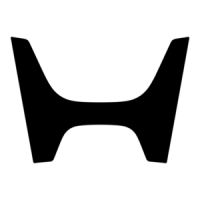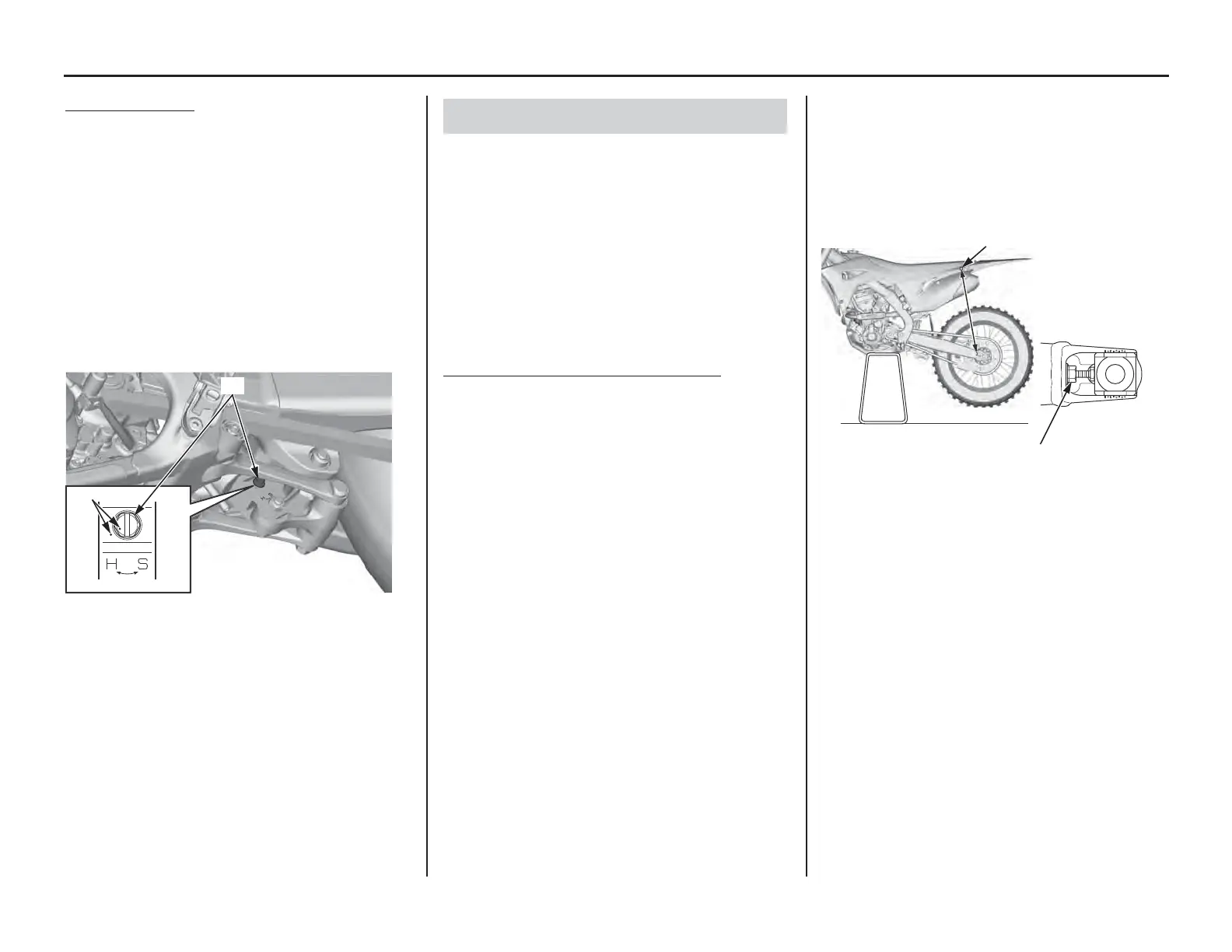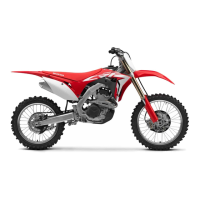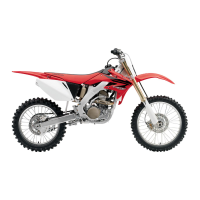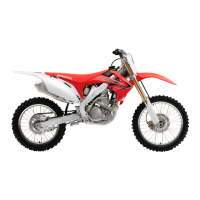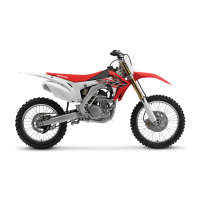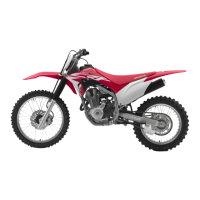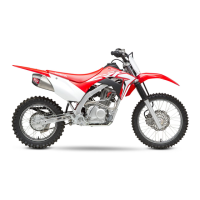132 Adjustments for Competition
Rear Suspension Adjustments
Rebound Damping
The rebound damping adjuster (6) is located at the
lower end of the rear shock absorber.
It has 17 clicks or more. Turning the adjuster one
full turn advances the adjuster 8 clicks.
• When adjusting the rebound damping adjuster,
make sure to use the proper size tool to avoid
damage.
• Rebound damping can be increased by turning
the adjuster clockwise.
• Be sure that the rebound damping adjuster is
firmly located in a detent, and not between
positions.
To adjust to the standard position:
1. Turn the adjuster clockwise (harder) until it
will no longer turn (lightly seat). Turn the
adjuster counterclockwise (softer) until it
clicks. This click is position 1.
2. Set the adjuster position 8 to 11 clicks and
adjust it until the punch marks (7) on the
adjuster and the rear shock absorber are
aligned.
Setting the proper race sag (ride height) is very
important for competition use.
Race sag refers to the amount of rear wheel travel
used by your CRF at rest, ready to ride, with you
on the seat. As a general rule of thumb, the race sag
dimension should be about one-third of the
maximum travel.
On your CRF, ride height is changed by adjusting
the rear suspension spring pre-load.
Spring Pre-load & Race Sag Adjustment
The following adjustment procedure establishes
the correct starting point for any suspension tuning
— the proper rear suspension spring preload
adjustment for your specific needs.
Your CRF should be at normal racing weight,
including fuel, oil and coolant. You should be
wearing all your normal protective apparel. You
will need two helpers.
To calculate the proper adjustment, it is necessary
to measure between two fixed points — from the
center of the seat mounting bolt to the center of the
chain adjuster lock nut as illustrated here — for
two different situations:
unloaded: motorcycle on an optional workstand
with rear suspension fully extended, no rider.
loaded with rider: motorcycle on ground, with
rider.
1. Support your CRF on an optional workstand
with the rear wheel off the ground.
2. Measure the unloaded dimension.
(6) rebound damping adjuster (7) punch marks
(6)
(7)
Rear Suspension Race Sag
UNLOADED MEASUREMENT
(without rider)
EXAMPLE: 24.6 in (625 mm)
SEAT MOUNTING BOLT
CHAIN ADJUSTER LOCK NUT
